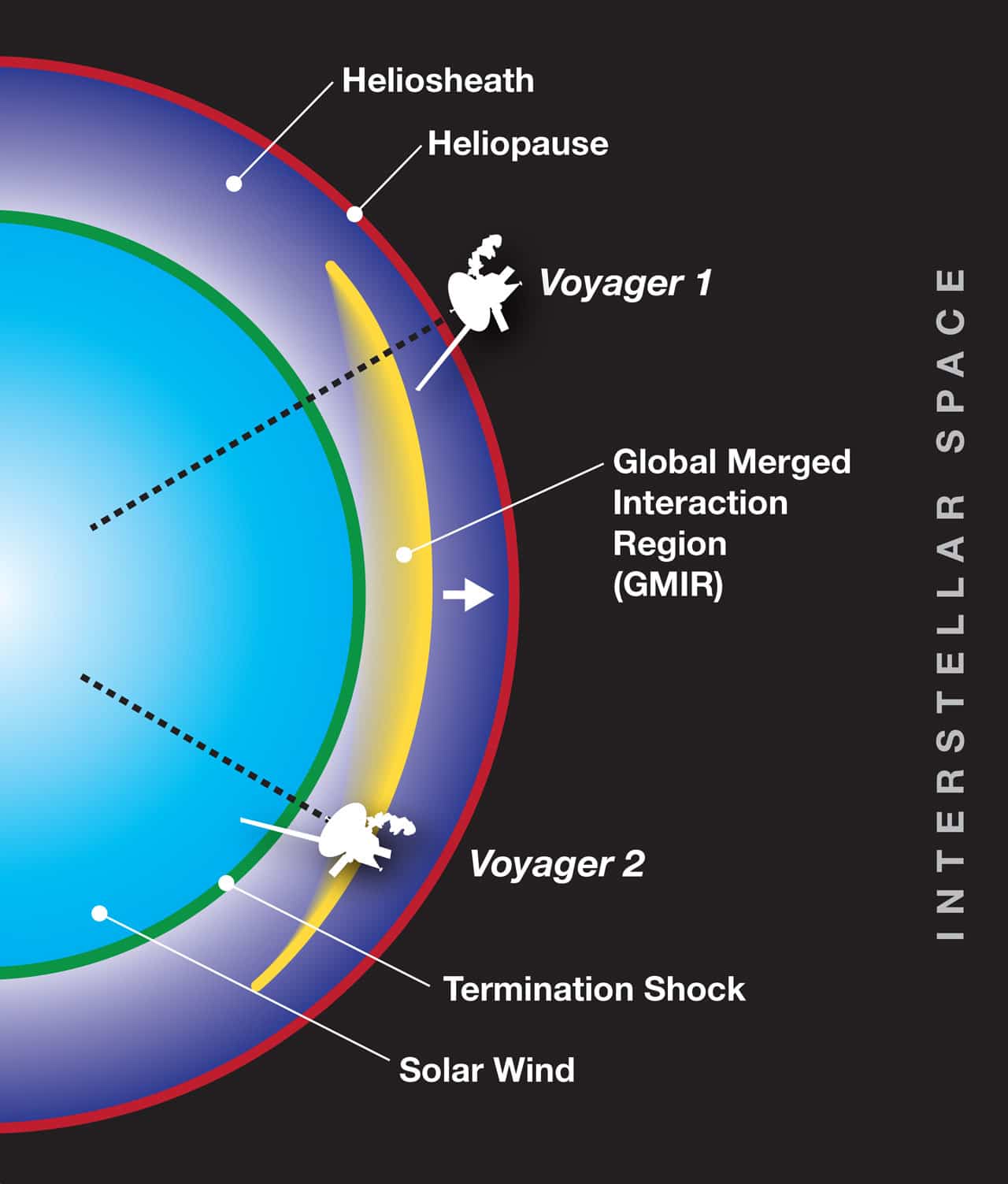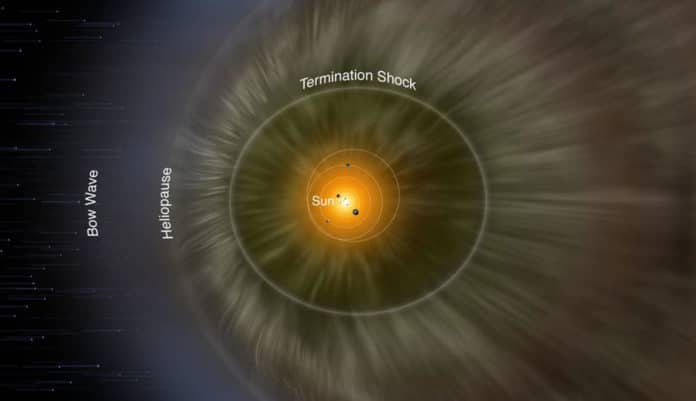NASA’s Voyager spacecraft recently used the data from the Voyager probes and calculated the total pressure at the boundary of our solar system. This is for the first time; scientists were able to measure the pressure in the heliosheath, the outer region of the solar system.
This pressure is exerted by the force plasma, magnetic fields, and particles like ions, cosmic rays, and electrons apply to each other. What’s more, the pressure runs higher than expected.
Heliosheath is a zone between the termination shock and the heliopause, in the heliosphere, at the outer border of the Solar System, where the solar wind is dramatically slower than within the termination shock. Lies 9 billion miles away, this region is hard to study. But the unique positioning of the Voyager spacecraft and the opportune timing of a solar event made measurements of the heliosheath possible. And the results are helping scientists understand how the Sun interacts with its surroundings.
Jamie Rankin, a lead author on the new study and astronomer at Princeton University in New Jersey, said, “In adding up the pieces known from previous studies, we found our new value is still larger than what’s been measured so far. It says that there are some other parts to the pressure that aren’t being considered right now that could contribute.”
While the discovery itself is exciting enough, it’s the way they found it that makes for a genuinely interesting bit of science.
As Earth has air pressure comprised of air particles drawn by gravity, space also has a pressure created by particles like ions and electrons. These particles, heated and accelerated by the Sun, create a giant balloon known as the heliosphere extending millions of miles out past Pluto, and at its edge, the Sun’s magnetic influence weakens due to particles from other stars and interstellar space.

Credits: NASA’s Goddard Space Flight Center/Mary Pat Hrybyk-Keith
The Voyager spacecraft have been traveling steadily out of the solar system since 1977. During the observations, Voyager 1 was already outside of the heliosphere in interstellar space, whereas Voyager 2 remained in the heliosheath.
In 2012, Voyager 2 detected a giant wave of coronal mass ejections in the GMIR. This wave caused the number of galactic cosmic rays to decrease temporarily. For months later, Voyager 1 picked up a similar decrease in observations, just across the solar system’s boundary in interstellar space.
Knowing the distance between the spacecraft, scientists did measure not only the pressure in the heliosheath but also the speed of sound. They found that the sound travels at around 300 kilometers per second in the heliosheath.
Scientists also detected an asymmetry in the intensity of cosmic rays at both spacecraft. At Voyager 2 inside the heliosheath, the number of cosmic rays decreased in all directions around the spacecraft. But at Voyager 1, outside the solar system, only the galactic cosmic rays that were traveling perpendicular to the magnetic field in the region decreased. This asymmetry suggests that something happens as the wave transmits across the solar system’s boundary.
Rankin said, “Trying to understand why the change in the cosmic rays is different inside and outside of the heliosheath remains an open question. Studying the pressure and sound speeds in this region at the boundary of the solar system can help scientists understand how the Sun influences interstellar space. This not only informs us about our solar system but also about the dynamics around other stars and planetary systems.”
